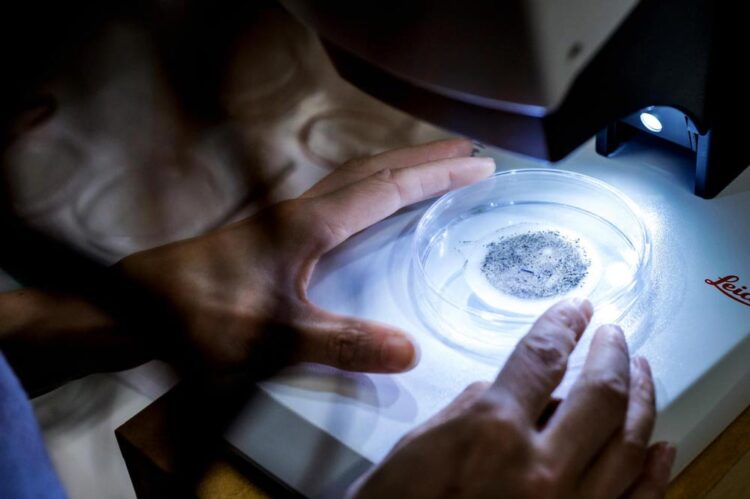Method for temporal monitoring of microplastic sedimentation

Microplastics have been found in nearly all organisms and habitats everywhere in the world.
Credit: UEF/ Raija Törrönen
The effects of microplastics on our health and the environment are being rigorously studied all across the world. Researchers are identifying microplastic sources and their potential routes to the environment by examining rainwater, wastewater, and soil.
Microplastics have been found in nearly all organisms and habitats everywhere in the world. However, factors contributing to the influx and accumulation of microplastics in water ecosystems aren’t fully understood yet. The focus of microplastics research has, for a long time, been on the age of microplastics found in sediments, and on the time it takes to accumulate there. So far, however, temporal changes in sedimentation haven’t really been considered in microplastics research.
Researchers in Finland (University of Eastern Finland, University of Turku, University of Helsinki) have tested the sediment trap method to analyse annual accumulation rates and possible seasonal variation. The sediment trap was installed on the lake bottom in the deepest part of the basin. Microplastics sink to the bottom of the basin together with other solid material, and they accumulate in sediment traps that are emptied on a regular basis. The sediment trap itself is a well-established method for sedimentological studies. The main focus in the development of the method was on the isolation of microplastic samples from sediment, and on testing the method’s feasibility in a body of water.
The researchers tested the method in the basin of Huruslahti Bay, Finland, in 2017-2018. The annual amount of microplastics accumulating in the sediment of Huruslahti Bay was 32,400 pieces per square metre in a year. The most important advantage of the method is that it can be used to determine the time it takes from microplastics to enter and accumulate in bodies of water. Time plays an important role when modelling the influx and accumulation of microplastics, as well as in predicting any environmental risks they might cause in the future.
###
The study was published in Environmental Pollution.
For further information, please contact:
Saija Saarni, PhD, saija.saarni (a) utu.fi, University of Turku/ University of Helsinki
Samuel Hartikainen, MSc, samuel.hartikainen (a) uef.fi, University of Eastern Finland
Research article:
Saija Saarni, Samuel Hartikainen, Senja Meronen, Emilia Uurasjärvi, Maarit Kalliokoski, Arto Koistinen, 2021. Sediment trapping – An attempt to monitor temporal variation of microplastic flux rates in aquatic systems. Environmental Pollution, Vol. 274, 1 April 2021,116568.
All latest news from the category: Ecology, The Environment and Conservation
This complex theme deals primarily with interactions between organisms and the environmental factors that impact them, but to a greater extent between individual inanimate environmental factors.
innovations-report offers informative reports and articles on topics such as climate protection, landscape conservation, ecological systems, wildlife and nature parks and ecosystem efficiency and balance.
Newest articles

Innovative 3D printed scaffolds offer new hope for bone healing
Researchers at the Institute for Bioengineering of Catalonia have developed novel 3D printed PLA-CaP scaffolds that promote blood vessel formation, ensuring better healing and regeneration of bone tissue. Bone is…

The surprising role of gut infection in Alzheimer’s disease
ASU- and Banner Alzheimer’s Institute-led study implicates link between a common virus and the disease, which travels from the gut to the brain and may be a target for antiviral…

Molecular gardening: New enzymes discovered for protein modification pruning
How deubiquitinases USP53 and USP54 cleave long polyubiquitin chains and how the former is linked to liver disease in children. Deubiquitinases (DUBs) are enzymes used by cells to trim protein…



